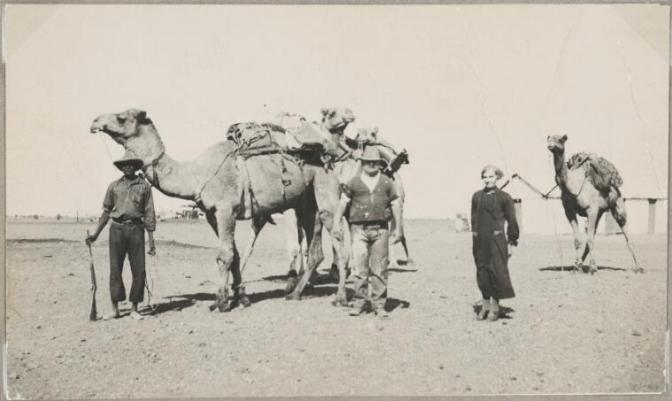Turn your back to the ocean in Australia, and head inland, and you will soon leave the green and populated coastal regions and reach the drier interior, the iconic Aussie Outback. Keep going towards the middle and you’ll hit desert. The centre of Australia is one of the driest regions of the the driest continent on earth, receiving about 150mm of rain per year with summer temperatures reaching 50 degrees Celsius. Here, in the heart of Australia, lies the the Simpson Desert. It is the fourth largest Australian desert, with an area of 176,500 km2 (68,100 sq mi). It also lays claim to being the world’s largest sand dune desert, covering the Northern Territory, South Australia and Queensland in central Australia and contains the world’s longest parallel sand dunes. The dunes vary in height from 3 metres in the west to around 30 metres on the eastern side. The largest dune, Nappanerica (Big Red), is 40 metres in height. First crossed by the European explores in only 1932. And even these days it still presents a challenge, so much so the government closes the desert to protect tourists from themselves. So that is why in in Sept. we are going to drive around and across it!
Check out some great images from National Parks South Australia
The first European to see the desert was Charles Sturt in 1844. The first non-indigenous West to East crossing was completed in 1936 on camels, by Ted Coulson.

The first vehicular crossing was only undertaken in 1962 by Reg Sprigg, his indomitable wife Griselda and children Marg (10) and Doug (7) . They crossed approximately 1100 sand dunes in the process. No tracks, no GPS, not even a radio. The vehicle? A short wheelbase Nissan Patrol G60.
Of course, Aboriginal occupation pre-dates all these European explorers, sites up to 5000 years old have been found. UThe Wangkanguru people were living in the desert on a permanent basis at the time of David Lindsay’s 1886 expedition, and he used their network of ‘mikiri’, or Aboriginal wells, as water sources on his journey through the west. Coulson used the knowledge of a Anterkarinya (local Aboriginal) man, Peter Ains on his crossing. Unfortunately many original inhabitants had been lured out of the desert by 1900 and by 1965 there were only three Wangkangurru people left who were born in the desert, the last of whom, Maudie Naylon Akawiljika, born about 1885, died in Birdsville in 1981.
Originally I had planned to do the trip by myself, but when Lou found out, she insisted that I couldn’t go without her, and because we can’t find anyone game enough to babysit the kids for 3 weeks, they’re coming too. Which, of course, makes the planning and trip preparation eleventy millions times harder.
We won’t actually be doing the traditional West to East or vice versa crossing. We have joined up with a Tagalong tour run by Australian 4×4 to travel to drive from Batton Hill through Atnetye land and onto the Hay River track. The thing that drew me to this tour is that we get to traverse 200-300km of desert where very few cars have been. The traditional East West route is pretty much a highway these days, so the opportunity to travel a more remote, less known region really appeals.
But we’ve got to carry food, fuel and most importantly water for 5 people for 5 days across the desert – with recommendations of 4litres per person per day, that’s 120 litres…
It has been an expensive 12 months preparation.
If you’d like to read more about this amazing desert and its history then I highly recommend The Simpson Desert by Mark Shephard. Unfortunately the book is out of print. I found a copy in my local library. I also found a copy on ebay for $130!!!
